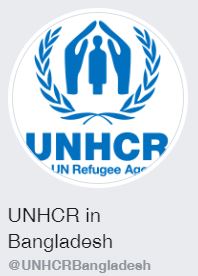UN agencies launch disaster risk reduction activities and joint workshop

![]()
News Desk
United Nations agencies have launched the second phase of their Disaster Risk Reduction activities in the host community of Cox’s Bazar, alongside partners and local authorities. The International Organization for Migration (IOM), the United Nations Refugee Agency (UNHCR), and the World Food Programme (WFP) launched the activities on 01 October 2019.
Cox’s Bazar is one of the most disaster-prone districts of Bangladesh, susceptible to tropical cyclones and associated storm surges, flash flooding, and landslides. Vulnerability in the district is high, with many villages, farms, and public assets exposed to recurrent disasters every year. In response to this, UN agencies have been working with government to further develop local capacity to respond to these recurring disasters.
This initially included the rehabilitation of more than 60 cyclone shelters in the Ukhiya and Teknaf areas throughout 2018/19 which constituted the first phase of disaster risk reduction work. The second phase will further reinforce and rehabilitate the shelters, strengthen local capacity, preparedness, and resilience, and strengthen social cohesion.
“Rehabilitating these cyclone shelters so they can protect the community during the two cyclone seasons each year is just part of our disaster risk reduction activities in Cox’s Bazar,” said Mr Peter Guest, Emergency Coordinator for WFP in Cox’s Bazar.
“Mitigating the impact of disasters and ensuring vital access points remain open is critical to maintaining food security in the region. Bangladesh is facing an increasing number of weather-related disasters as the effects of climate change worsen which makes it even more important to ensure that local communities are empowered and resilient when facing disasters.”
“IOM is very pleased with yet another partnering initiative with the Government of Bangladesh, our sister UN agencies and other partners, this time to contribute to tackling Disaster Risk Reduction in the host communities,” said Manuel Pereira, IOM Deputy Chief of Mission in Bangladesh.
“Infrastructure improvements and capacity strengthening of communities to take the lead in disaster preparedness and lifesaving response is a priority for IOM. Our commitment to Bangladesh capacity to mitigate and when needed self-respond to disasters is unequivocal.”
The launch was followed by a two-day Disaster Risk Reduction workshop which sought to create linkages between local, national, and international disaster reduction actors.
“UNHCR and partners continue to improve our preparedness capacity for extreme weather events,” said Marin Din Kajdomcaj, Head of Operations for UNHCR in Cox’s Bazar.
“UNHCR has put refugees at the center of the response through skill trainings and the provision of basic tools. Results are already showing – this year the number of individuals, shelters and infrastructure affected by the monsoon was significantly lower than in previous years. While joint projects underway have massively reduced the risk of floods, landslides and the loss of life, much more remains to be achieved, through the exchange of knowledge and best practices, improvement of coordination and simulation exercises.”
UN agencies are working closely with the Ministry of Disaster Management and Relief (MoDMR) as well as the Cox’s Bazar District Disaster Management Committee to strengthen the local community’s resilience and capacity to face recurrent disasters.